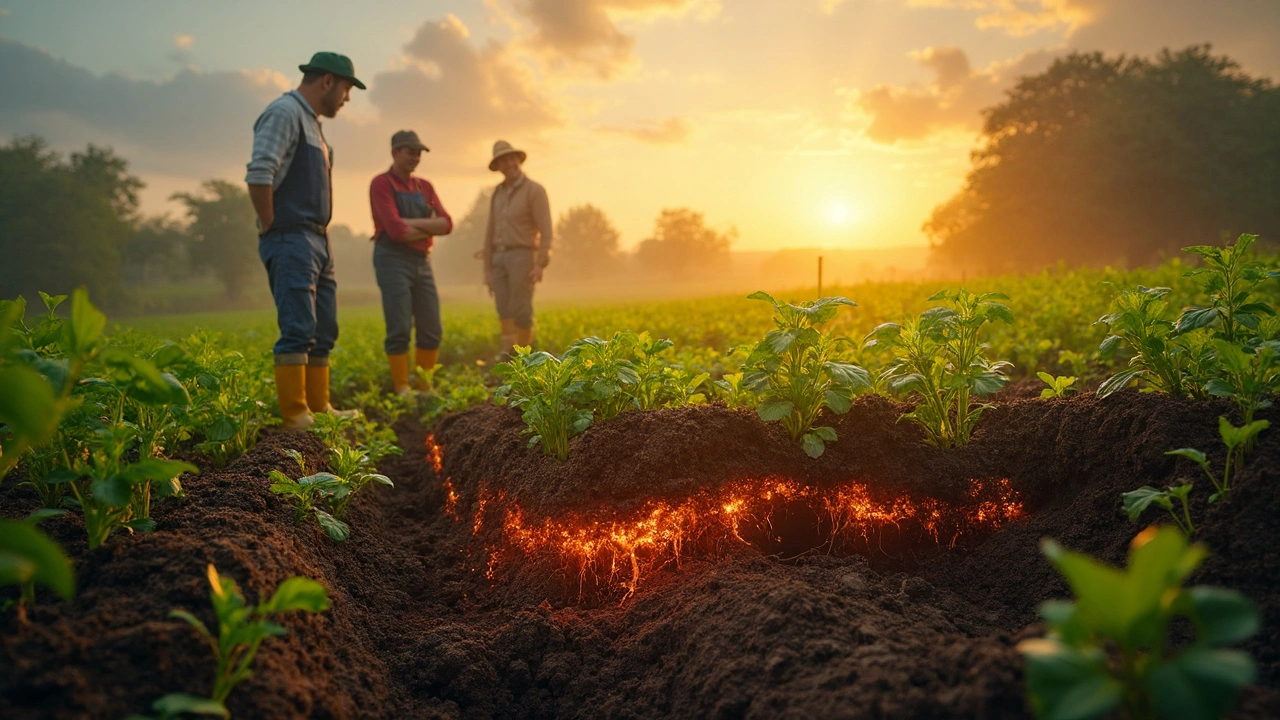Mycorrhizal fungi are game-changers in agriculture, teaming up with plant roots to help crops grow stronger and faster. These tiny partners boost nutrient intake, improve soil health, and cut down on the need for chemical fertilizers. Farmers using mycorrhizal fungi often see bigger yields and healthier plants. This article breaks down how these fungi work, why they matter, and how anyone can take advantage of their benefits. Get practical tips on using mycorrhizal fungi in gardens or large-scale farms alike.
Sustainable Farming: Practical Tips for Greener Growing
If you’ve ever wondered how to make your garden or small farm kinder to the planet, you’re in the right place. Sustainable farming isn’t a buzzword—it’s a set of everyday actions that keep soil alive, cut down waste, and still give you a bountiful harvest. Below you’ll find straightforward ideas you can start using today, no matter the size of your plot.
Start with Soil Health
Healthy soil is the foundation of any sustainable system. Begin by testing your soil’s pH and nutrient levels; a simple kit from a garden store does the trick. Add organic matter like compost, leaf mulch, or well‑rotted manure. These amendments feed microbes, improve structure, and hold water better, which means you’ll need less irrigation.
Rotate crops each season to avoid nutrient depletion. Plant legumes—such as beans or peas—every few years; they pull nitrogen from the air and lock it into the soil, reducing the need for synthetic fertilizers.
Water Wisely
Water is precious, and over‑watering wastes both time and energy. Install drip‑irrigation or soaker hoses to deliver water right to the root zone. Mulch heavily around plants to keep the soil cool and moist, cutting evaporation by up to 50%.
Collect rainwater in barrels and use it for your garden. Not only does this lower your utility bill, it also provides a chemical‑free water source for delicate seedlings.
When you plan your garden layout, group plants with similar water needs together. This way you can water each zone efficiently without over‑ or under‑watering any one crop.
Integrated pest management (IPM) is another cornerstone of sustainable farming. Instead of reaching for chemicals at the first sign of insects, scout your garden regularly. Look for natural predators—like ladybugs, lacewings, or birds—that keep pest populations in check.
If you spot trouble, start with mechanical controls: hand‑pick insects, use row covers, or plant trap crops that draw pests away from your main harvest. When you do need a spray, choose organic options like neem oil or insecticidal soap, and apply only when thresholds are reached.
Saving energy goes hand‑in‑hand with sustainable practices. Use solar‑powered garden lights, hand tools instead of gas‑powered equipment, and consider a small wind turbine if your farm has enough open space.
Finally, think about the end of the line. Compost kitchen scraps and garden waste to create a closed‑loop system. Not only does this cut down on landfill trash, it produces nutrient‑rich material you can feed back into your soil.
By focusing on soil, water, pest control, and energy, you can turn any plot into a resilient, eco‑friendly food source. Sustainable farming isn’t about perfection—it’s about making smarter choices day by day. Start small, track your results, and watch your garden thrive while you shrink your environmental footprint.

